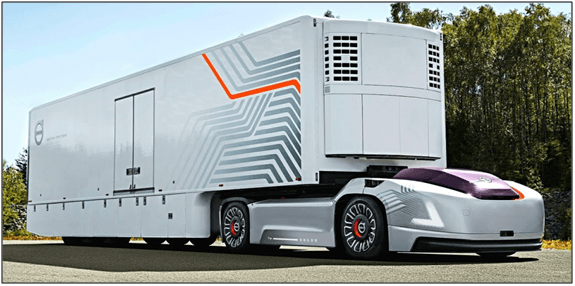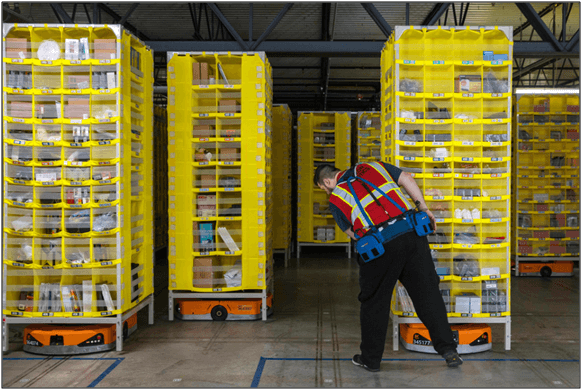Integrated Logistics plays a vital role in the total supply chain, ensuring an uninterrupted and timely supply of raw materials, work-in-progress, and finish product to end consumer. Integrated Logistics is a one-stop solution provided by logistics service provider to their customers. The key factors of a successful integrated logistics is to have a good transportation and distribution planning, as well as the effective management of inventory stock level in the warehouse operations.
Table of Contents
Fleet Management System (FMS)
The system uses software and technology to help transportation to comply with guidelines for the management of fleet. It has many different functions, such as vehicle maintenance; telematics; safety management; fuel management and management of the fleet drivers to enable a smooth and well organized transition of vehicles and operations. Combined with asset management capabilities, it also enables the tracking of the delivery of products.

Tracking System
The system is utilized to monitor data of products on the move and to provide real-time information on the fleet. It simplifies the overall delivery process by adopting the end-to-end visibility and control solution which allow planning and management of shipments as well as choosing the most cost-effective mode of shipment. It supports allocation automation system, live location tracking, optimization of the delivery route and electronic proof of delivery.
Real-time tracking allows customers to track their orders instantly. Real-time reports and KPI dashboards can be retrieved for analysis. The system also enables proactive tracking and tracing of real-time data to provide feedback and options at any time. Statistics can be extracted from information for assessment on the efficiency of the shipment and effective shipment management decision.

Internet of Things (IoT)
IoT is a network of sensors that data are embedded with electronic system, IoT increases the connectivity of devices with unique identifiers (UIDs) for communication and connection with the outside world via the internet. IoT has been used on the development of vehicle connectivity technologies to manage the location of important assets for the business.
RFID Tags
RFID tags uses smart barcode attached to a product for identification and tracking. It sends real-time tracking with up-to-the-minute live tracking data and can be used for various applications. Passive RFID tags are inexpensive, more popular, very durable and likely to last a lifetime. It does not require a direct line of vision to the scanner although it has a shorter read range.
Autonomous Trucks
Equipped with radar sensors and cameras, these driverless trucks can trail each other at equal speed on the road, with real-time visibility on the movement of cargo and dynamic path planning system which is essential for applications, such as traffic monitoring, fuel economy and path modification. With the ability to handle stop-and-go traffic, they are an essential asset in the port. For safety measures, autonomous trucks are fitted with sensors for appropriate control of speed for the vehicle.

Aerial Drones
Drones equipped with advanced optical, RFID and barcoding sensor have improved inventory cycle count by scanning the inventories and pallets while moving through the warehouse. The operators will receive feedback from the scanning in real-time which the result will be sent directly to the warehouse manager or uploaded into the WMS.
Goods-to-person Picking Robots
The robot will move around the warehouse using trackless navigation guided by QR codes located on the floor, carrying the shelves stacked with different products to a floor assistant, retrieves and move racks to the pick stations for order picking. ABC analysis is used in arranging the mobile racks with fast-moving goods to the most appropriate locations.

Automated Guided Vehicles (AGVs)
Automated guided vehicles (AGVs) are driverless load carriers that moves independently throughout a warehouse. Coordinated by a blend of programming and sensor-based direction frameworks, they move in an anticipated way with controlled acceleration and deceleration and are incorporated with programmed hindrance identification guards which provide safe movement of loads. AGVs moves stock to picking locations accessible to pickers, making the order picking process more efficient.

Machine-2-Machine Technology (M2M)
M2M revolution has significantly evolved into an advance system that will monitor and organize all components of warehouse operation. When combined with warehouse management system (WMS), the new version of M2M system is making it easier to oversee all hardware in the warehouse. It also collects and share information that support operational strategies and fast track the next course of action.

Order Fulfilment Technologies
- Pick-by-Light System
It functions by using special lighting to lead warehouse assistant to the item zones which makes it much easier for the worker to know which item to pick. It is also flexible with the ability to plan, manage and segregate orders picked.
- Put-by-Light System
This system guides warehouse assistant on the steps to apportion items in a warehouse for order picking. This method is excellent for picking from mass stock, such as, the retail warehouse for clothing, outdoor supplies and etc.
- Vision Picking System
The smart glasses provide visual and voice instruction and information on the location and allocation of the items which guarantees total error-free picking. It allows the warehouse assistant to access data while freeing them from any handheld gadgets.
The full content is only visible to SIPMM members
Already a member? Please Login to continue reading.
References
Alagappan Dasarathy, DLSM. (2018). “Integrating Warehousing and Transport Functions for EPC Projects”. Retrieved from SIPMM: https://publication.sipmm.edu.sg/integrating-warehousing-transport-functions-epc-projects/, accessed 24/06/2020.
Alex Lim Tze How, DLSM. (2020). “Technologies for Global Logistics Services”. Retrieved from SIPMM: https://publication.sipmm.edu.sg/technologies-global-logistics-services/, accessed 29/06/2020.
Goh Siang Wei, DLSM. (2020). “Technologies for Warehouse Automation”. Retrieved from SIPMM: https://publication.sipmm.edu.sg/technologies-warehouse-automation/, accessed 29/06/2020.
Ma Wen Jie. (2018). “Types of ERP Systems”. Retrieved from https://bizfluent.com/about-5366970-types-erp-systems.html, accessed 24/06/2020.
Malvina Ong Moy Geem, ADLSM. (2019). “Digital Technologies for Fleet Visibility and Responsiveness”. Retrieved from SIPMM: https://publication.sipmm.edu.sg/digital-technologies-fleet-visibility-responsiveness/, accessed 29/06/2020.
Ng Li Hsia Alicia, DLSM. (2019). “Best Practices for Managing Warehouse Inventory”. Retrieved from SIPMM: https://publication.sipmm.edu.sg/best-practices-managing-warehouse-inventory/, accessed 24/06/2020.
Ruthie Bowles. (2020). “An Intro to Cross-Docking: Is It Right For My Business?”. Retrieved from https://www.logiwa.com/blog/warehouse-cross-docking#3, accessed 27/06/2020.


